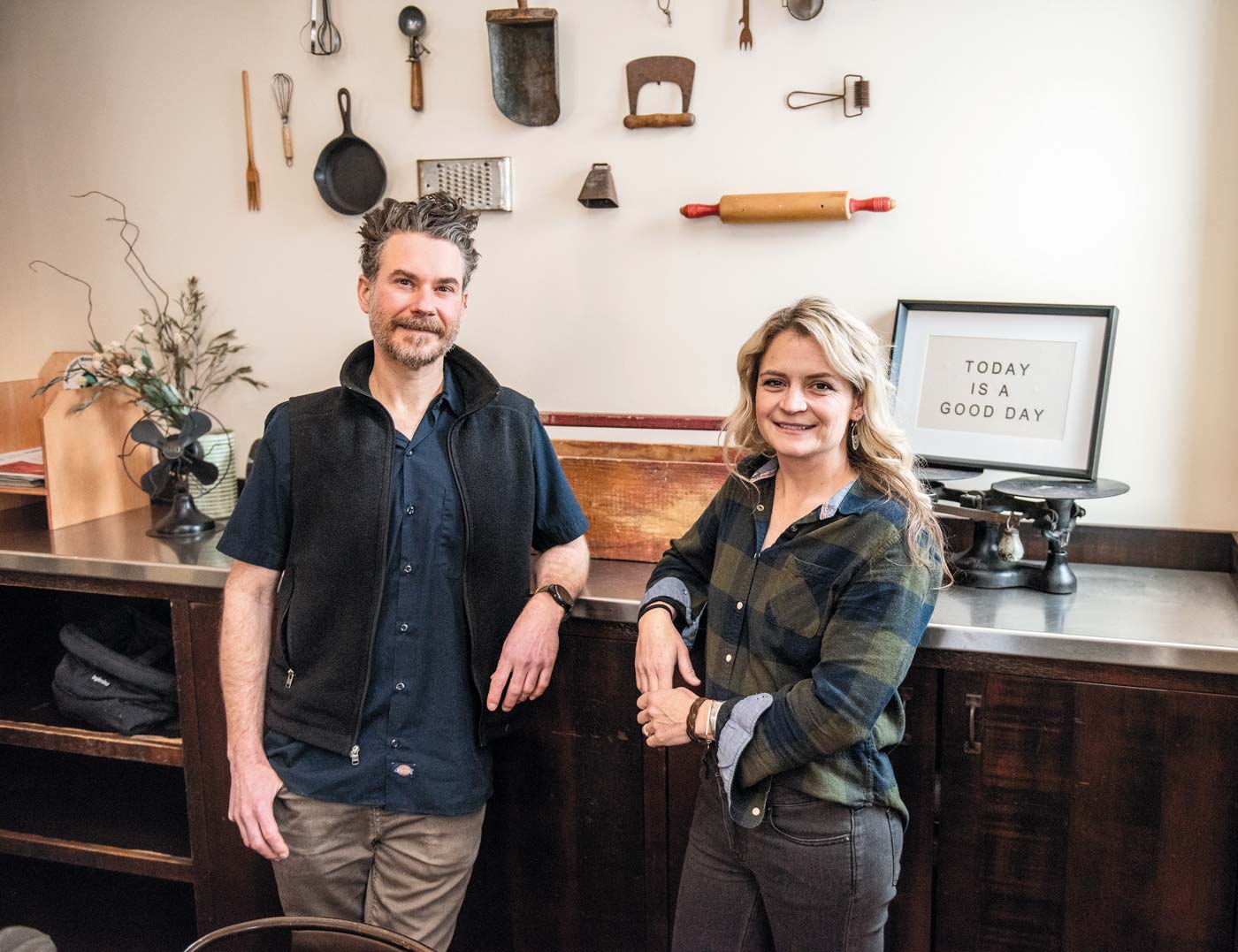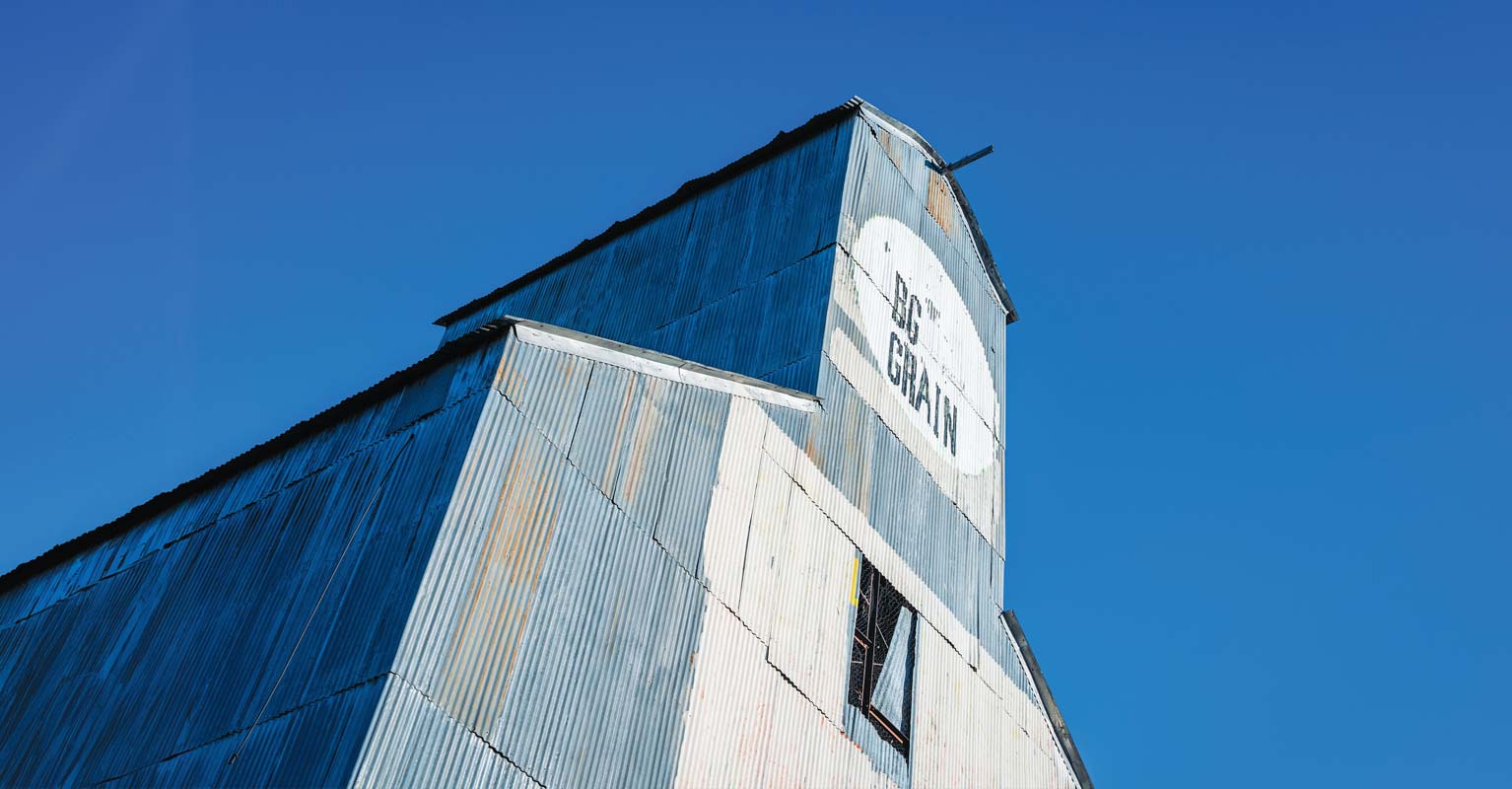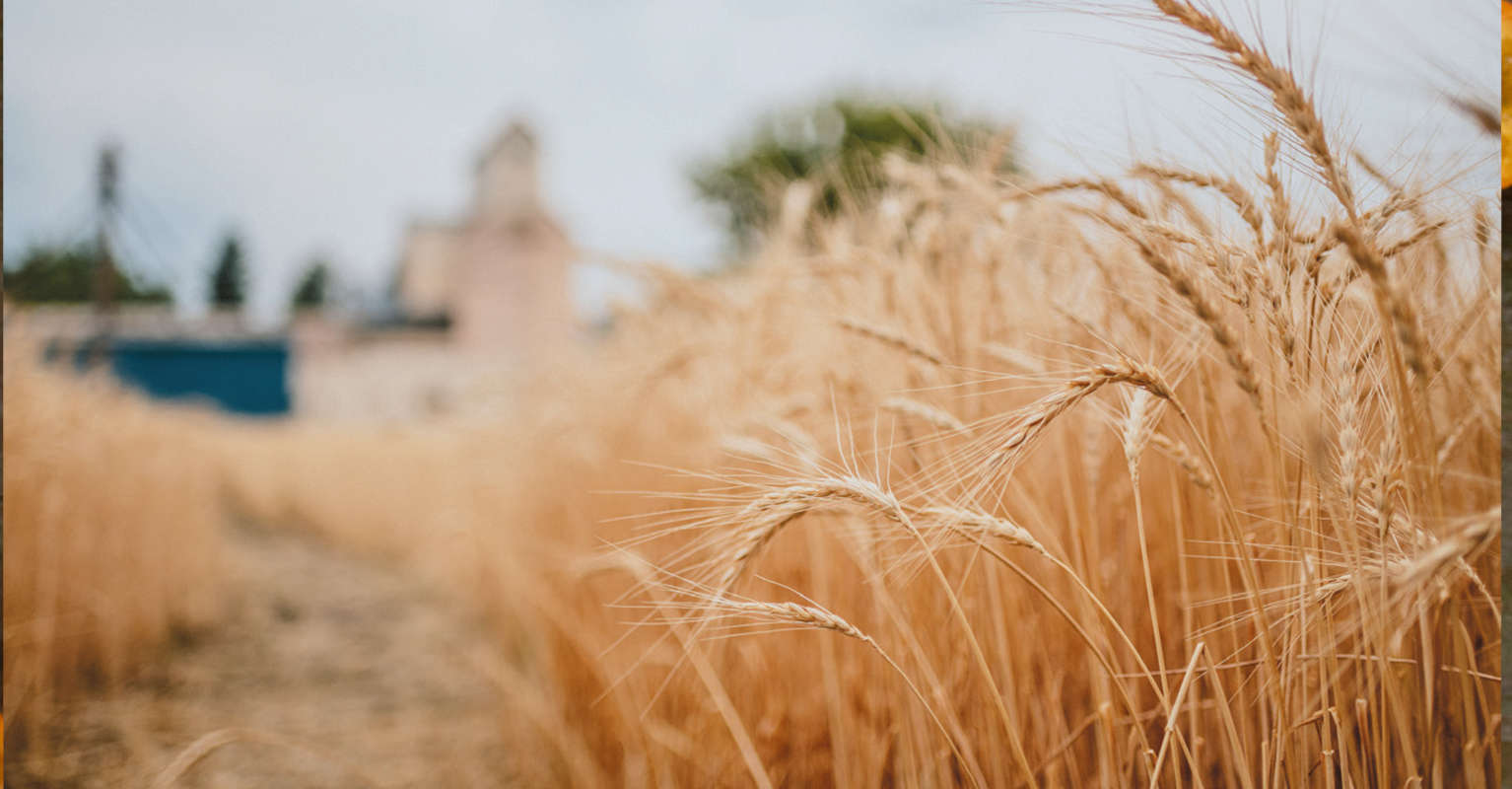Where Recreation Meets Food System Resilience
After clipping her belay device to the hardpoint of her climbing harness, Kate Rutherford takes in slack, pulling the rope taut. “You’re on belay,” she says, affirming that it is safe for me to begin climbing.
It’s a September morning in Bozeman, and though it’s well-past sunrise we will not feel the sun’s warm reprieve for many hours in Hyalite Canyon. There are around 18 of us at Practice Rock, a locals’ favorite for easy-access climbing. Despite the short but steep hike up to the crag, we’re all shivering in our puffies.
We’re here participating in an event with Farm To Crag, a rock-climber-driven nonprofit responding to climate change by encouraging food choices that grow healthier athletes, thriving communities, and climate-resilient soils.
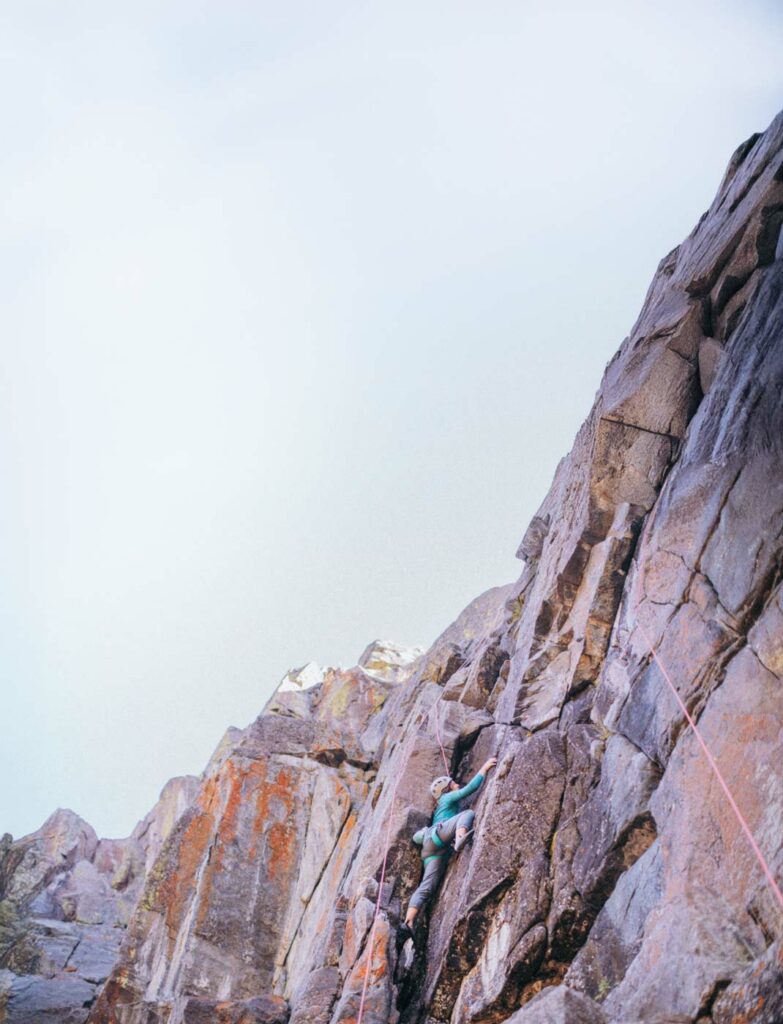
I check my figure-eight knot and grudgingly pull off my gloves, blowing on my hands and rubbing them together before reaching out to touch the gneiss in front of me. My fingers protest the frigid rock and quite immediately go numb. Hanging in my harness 15 feet off the ground, I’m unable to maintain my connection to the wall without feeling in my fingers. Rutherford shouts up a few words of encouragement and continues chatting. Just like that, all inhibition dissipates.
Nobody is here to show off their climbing skills; we’re all here because we do not want to exist in silos. Rock climbing, at least for this group, is not just a sport; it’s a gateway to community, to health and joy, and one that comes with a responsibility to this earth and to each other.
That is why Farm To Crag gathered us here—not only for a weekend of fun and recreating in the mountains, but as a call to action.
Fueled by Local Foods
Despite the map’s success, Rutherford recognized a critical gap preventing her from achieving the full impact of her mission.
“It became clear that the map was not enough,” she says. “We needed to teach climbers and people the why behind the map.”
Since 2019, Farm To Crag has hosted 16 events in Bozeman; Yosemite, California; Chattanooga, Tennessee; North Conway, New Hampshire; and Chamonix, France. Each includes three key elements: movement outdoors, breaking bread together, and volunteer work that supports local food producers.
Kate Rutherford, Linda Williamson, and Julie Faber founded Farm To Crag with a vision of creating an online, interactive map to help climbers find nourishing local food while on the road. The idea was to shift from an extractive approach to one that supports communities, transforming how climbers engage with local food systems during their travels.
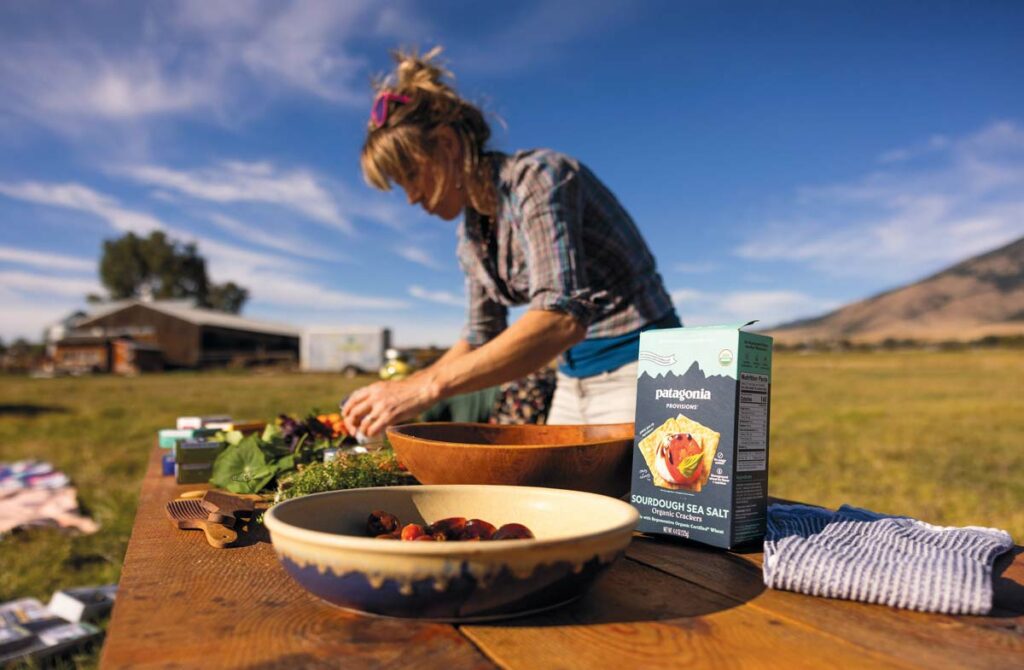
Esther Smith, executive director of Farm To Crag, says the organization is at the intersection of recreation, wildlands, and public spaces. “The health of all of those spaces is intertwined with the health of our agriculture systems,” she says.
The 2024 Bozeman event was a weekend-long vibrant celebration of community and purpose. Participants spent their mornings rock climbing, casting flies into the Gallatin River, or pedaling gravel roads in Gallatin Gateway alongside the Farm To Crag team.
“Climbers are pretty good problem solvers who engage in hard work and see it through,” says Smith. “[Farm To Crag] was founded by climbers, but more and more folks are reaching out and wanting to be part of it. It’s a cool mix of thinkers and people who want to see the system change. There’s a lot of hope infused into it—I think that’s a huge part of it: the hope and joy.”
Saturday afternoon, in Story Mill Community Park, a thought-provoking panel brought together visionaries from across Montana’s food landscape: Emily Stifler Wolfe, the creative force behind Food, Montana, podcast, guided conversations with kamut pioneer Bob Quinn of the Quinn Institute; Caleb Williams shared powerful insights on Indigenous food sovereignty and his work creating a directory of Native food producers; and Jacy Rothschiller of Gallatin Valley Botanical tapped into her hands-on expertise to ground the discussion in the daily realities of sustainable farming.
The next day, participants got a little dirt under their fingernails working alongside local farmers on their land or volunteering with the Human Resource Development Council and the Gallatin Valley Food Bank community gardens, connecting directly with the region’s food system challenges.
That evening, as the day’s light faded into alpenglow across the Bridger Range, Becky Weed and Dave Tyler welcomed Farm To Crag participants to Thirteen Mile Farm—not just for the pig roast by chef Charley Graham, but for an evening of deep conversation and collective visioning about the future of food and community in Montana.

Lorca Smetana—farmer, climber, and resilience coach— invited us to tap into the present moment before releasing a flock of white doves to the sky. As the birds took flight, the evening unfolded into dialogue. Food Lens Bozeman, an initiative looking at the future of land and water management, affordable housing, education, healthcare, and community governance in Gallatin Valley, filtered through every facet of food security, brought together a group of Bozeman voices—farmers, climbers, storytellers, and entrepreneurs—who shared how their connection to food, land, and community has shaped their lives. The conversation culminated in an invitation to everyone present to contribute their own unique skills into strengthening Gallatin Valley’s local food system.
Vision to Action
Smith says an exciting idea that came out of the Bozeman Farm To Crag event was a Farm To Crag CSA support fund. “We’ve been working as an organization to deliver programs that support our mission and support regenerative agriculture as a climate-change solution,” she says. “Ultimately, it comes back to farmers.”
After meeting with Gallatin Valley farmers to discuss how Farm To Crag can support them, Smith and her team decided on a CSA fund that would help make local food more accessible to people who struggle to afford it.
“It’s an effort to say we want to work toward fair food equity and food security by creating a pool of money that goes right to farmers’ pockets and supports people who couldn’t otherwise afford a CSA,” says Smith.
The pilot program launches this spring starting with three Gallatin Valley farms: Chance Farm, Gallatin Valley Botanical, and Amaltheia Organic Dairy, as well as two farms in California. Smith says the organization is keeping the project small and local for now, but if it aligns with funding, it will be expanded next year.
Valerie Niederer—harvest, sales, and CSA manager of Chance Farm—says the program is going to help with retention of CSA customers while encouraging new members to subscribe.
For Chance Farm, that means a $150 subsidy, provided by the Farm To Crag CSA fund, will be applied to 25 of their subscribers. Applications are open for single people with an annual income of $50,000 or under, two or more people with an income of $90,000 or under, or full-time students.
“There is an obvious throughline between the folks who want open spaces to stay open and farmlands to stay undeveloped farmlands,” says Niederer. “It makes a lot of sense to bring [outdoor people] into the fold: people who care about food systems and want to learn more about farming.”
Growing the Future
Between climbing and belaying one another we eat sandwiches on thick homemade bread exploding with locally grown vegetables. We delight in chocolate chip Montana-grown kamut cookies from Together Bakery and indulge in conversation and company.
Three 9-year-old girls—electric balls of energy who have been wearing climbing harnesses since before they could walk—climb with Jeannie Wall, founder of Broad Beta. The girls giggle and shriek their enthusiasm, and I can’t help but be overcome by how lucky they are to have women like these as role models.
Watching these connections unfold across generations, the true purpose of Farm To Crag comes into focus: “Our lives are interconnected with the people who nourish us,” Rutherford says. “At some point I realized: Climbers aren’t going to save the world; farmers are.”
AREA EVENTS
Old Salt Festival June 20–22 Mannix Family Ranch Farm To Crag will join the Old Salt Co-op for the third annual Old Salt Festival to celebrate Montana land stewardship, food as medicine, and the connection between eaters and producers.
Bozeman Farm To Crag September 6 Chance Farm For the third year in a row, join the Farm To Crag team for an exploration of the intersection between agriculture and the great outdoors. Activities will include rock climbing, fly fishing, volunteer farm work, a farm dinner, live music, and panel discussion, with programming centered around supporting our local producers and learning about the work that goes into regenerative organic farming, the economics of farming in the Gallatin Valley, and celebrating community-supported agriculture (CSA).
Bozeman Ice Festival December 10–14 Multiple Locations Farm To Crag will join in ice climbing clinics as well as host a small dinner of local, organic food made by expert chefs and climbers.
For more information on Farm To Crag and the organization’s events, visit farmtocrag.org.


